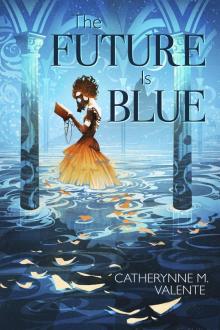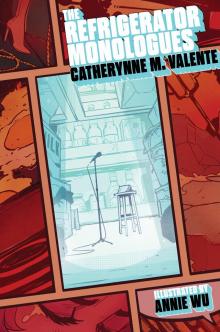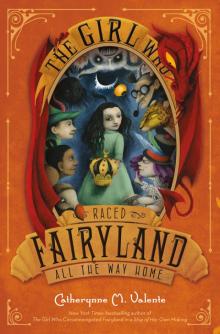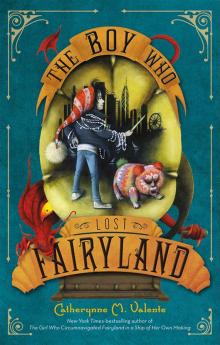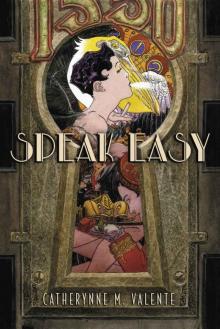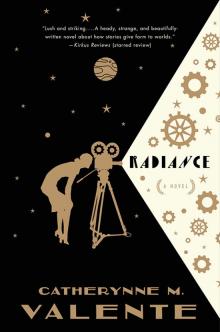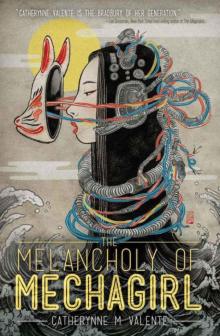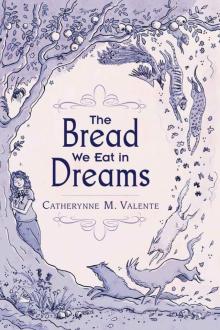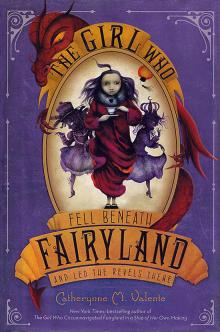


How Democracies Die, Page 5
Steven Levitsky
When Democratic [Party] chieftains are asked: “What about Ford?” they all shrug their shoulders. Almost without a single exception the men who constitute what is usually known as the “organization” in every State are opposed to Ford. In all the States except where there are presidential primaries these men practically hand-pick the delegates to the national conventions….Nobody denies the amount of Ford sentiment among the masses of the people—Democratic and Republican. Every Democratic leader knows his State is full of it—and he is afraid of it. He thinks, however, that because of the machinery of selection of delegates there is little likelihood that Ford will make much of a showing.
Despite popular enthusiasm for his candidacy, Ford was effectively locked out of contention. Senator James Couzens called the idea of his candidacy ridiculous. “How can a man over sixty years old, who…has no training, no experience, aspire to such an office?” he asked. “It is most ridiculous.”
It is, therefore, not surprising that when Ford was interviewed for Collier’s at the end of that long summer, his presidential ambitions were tempered:
I can’t imagine myself today accepting any nomination. Of course, I can’t say…what I will do tomorrow. There might be a war or some crisis of the sort, in which legalism and constitutionalism and all that wouldn’t figure, and the nation wanted some person who could do things and do them quick.
What Ford was saying, in effect, was that he would only consider running if the gatekeeping system blocking his path were somehow removed. So, in reality, he never stood a chance.
Huey Long didn’t live long enough to test the presidential waters, but despite his extraordinary political skills, popularity, and ambition, there is good reason to think that he, too, would have been stopped by the partisan gatekeepers. When he was elected to the Senate in 1932, Long’s norm-breaking behavior quickly isolated him from his peers. Lacking support among Democratic Party leaders, Long would have stood no chance of defeating Roosevelt at the 1936 convention. He would have had to mount an independent presidential bid, which would have been extraordinarily difficult. Polls suggested that a Long candidacy could divide the Democratic vote and throw the 1936 race to the Republicans but that Long himself had little chance of winning.
Party gatekeeping also helped confine George Wallace to the margins of politics. The segregationist governor participated in a few Democratic primaries in 1964, performing surprisingly well. Running against civil rights and under the slogan “Stand Up for America,” Wallace shocked the pundits by winning nearly a third of the vote in Wisconsin and Indiana and a stunning 43 percent in Maryland. But primaries mattered little in 1964, and Wallace soon bowed out in the face of an inevitable Lyndon Johnson candidacy. Over the next four years, however, Wallace campaigned across the country in anticipation of the 1968 presidential race. His mix of populism and white nationalism earned him strong support among some white working-class voters. By 1968, roughly 40 percent of Americans approved of him. In other words, Wallace made a Trump-like appeal in 1968, and he enjoyed Trump-like levels of public support.
But Wallace operated in a different political world. Knowing that the Democratic Party establishment would never back his candidacy, he ran as the candidate of the American Independence Party, which doomed him. Wallace’s performance—13.5 percent of the vote—was strong for a third-party candidate, but it left him far from the White House.
We can now grasp the full scale of Philip Roth’s imaginative leap in his novel The Plot Against America. The Lindbergh phenomenon was not entirely a figment of Roth’s imagination. Lindbergh—an advocate of “racial purity” who toured Nazi Germany in 1936 and was awarded a medal of honor by Hermann Göring—emerged as one of America’s most prominent isolationists in 1939 and 1940, speaking nationwide on behalf of the America First Committee. And he was extraordinarily popular. His speeches drew large crowds, and in 1939, according to Reader’s Digest editor Paul Palmer, his radio addresses generated more mail than those of any other person in America. As one historian put it, “Conventional wisdom had had it that Lindbergh would eventually run for public office,” and in 1939, Idaho senator William Borah suggested that Lindbergh would make a good presidential candidate. But here is where we return to reality. The Republican Party’s 1940 convention was not even remotely like the fictionalized one described in The Plot Against America. Not only did Lindbergh not appear at the convention, but his name never even came up. Gatekeeping worked.
In the conclusion of their history of radical-right politics in the United States, The Politics of Unreason, Seymour Martin Lipset and Earl Raab described American parties as the “chief practical bulwark” against extremists. They were correct. But Lipset and Raab published their book in 1970, just as the parties were embarking on the most dramatic reform of their nomination systems in well over a century. Everything was about to change, with consequences far beyond what anyone might have imagined.
—
The turning point came in 1968. It was a heart-wrenching year for Americans. President Lyndon Johnson had escalated the war in Vietnam, which was now spiraling out of control—16,592 Americans died in Vietnam in 1968 alone, more than in any previous year. American families sat in their living rooms each evening watching the TV nightly news, assaulted with ever more graphic scenes of combat. In April 1968, an assassin gunned down Martin Luther King Jr. Then, in June, within hours of his winning the California Democratic presidential primary, Robert F. Kennedy’s presidential campaign—centered on opposition to Johnson’s escalating war—was abruptly halted by a second assassin’s gun. The cries of despair in Los Angeles’s Ambassador Hotel ballroom that night were given expression by novelist John Updike, who wrote that it felt as if “God might have withdrawn His blessing from America.”
Meanwhile, the Democrats grew divided between supporters of Johnson’s foreign policy and those who had embraced Robert Kennedy’s antiwar position. This split played out in a particularly disruptive manner at the Democratic convention in Chicago. With Kennedy tragically gone, the traditional party organization stepped into the breach. The party insiders who dominated on the convention floor favored Vice President Hubert Humphrey, but Humphrey was deeply unpopular among antiwar delegates because of his association with President Johnson’s Vietnam policies. Moreover, Humphrey had not run in a single primary. His campaign, as one set of analysts put it, was limited to “party leaders, union bosses, and other insiders.” Yet, with the backing of the party regulars, including the machine of powerful Chicago mayor Richard Daley, he won the nomination on the first ballot.
Humphrey was hardly the first presidential candidate to win the nomination without competing in primaries. He would, however, be the last. The events that unfolded in Chicago—displayed on television screens across America—mortally wounded the party-insider presidential selection system. Even before the convention began, the crushing blow of Robert Kennedy’s assassination, the escalating conflict over Vietnam, and the energy of the antiwar protesters in Chicago’s Grant Park sapped any remaining public faith in the old system. On August 28, the protesters turned to march on the convention: Blue-helmeted police attacked protesters and bystanders, and bloodied men, women, and children sought refuge in nearby hotels. The so-called Battle of Michigan Avenue then spilled over into the convention hall itself. Senator Abraham Ribicoff of Connecticut, in his nomination speech for antiwar candidate George McGovern, decried “the gestapo tactics” of the Chicago police, looking—on live television—directly at Mayor Daley. As confrontations exploded on the convention floor, uniformed police officers dragged several delegates from the auditorium. Watching in shock, NBC anchor Chet Huntley observed, “This surely is the first time policemen have ever entered the floor of a convention.” His coanchor, David Brinkley, wryly added, “In the United States.”
The Chicago calamity triggered far-reaching reform. Following Humphrey’s defeat in the 1968 election, the Democratic Party created the McGovern–Fraser Commission and gave it the job of reth
inking the nomination system. The commission’s final report, published in 1971, cited an old adage: “The cure for the ills of democracy is more democracy.” With the legitimacy of the political system at stake, party leaders felt intense pressure to open up the presidential nomination process. As George McGovern put it, “Unless changes are made, the next convention will make the last look like a Sunday-school picnic.” If the people were not given a real say, the McGovern–Fraser report darkly warned, they would turn to “the anti-politics of the street.”
The McGovern–Fraser Commission issued a set of recommendations that the two parties adopted before the 1972 election. What emerged was a system of binding presidential primaries. Beginning in 1972, the vast majority of the delegates to both the Democratic and Republican conventions would be elected in state-level primaries and caucuses. Delegates would be preselected by the candidates themselves to ensure their loyalty. This meant that for the first time, the people who chose the parties’ presidential candidates would be neither beholden to party leaders nor free to make backroom deals at the convention; rather, they would faithfully reflect the will of their state’s primary voters. There were differences between the parties, such as the Democrats’ adoption of proportional rules in many states and mechanisms to enhance the representation of women and minorities. But in adopting binding primaries, both parties substantially loosened their leaders’ grip over the candidate selection process—opening it up to voters instead. Democratic National Committee chair Larry O’Brien called the reforms “the greatest goddamn changes since the party system.” George McGovern, who unexpectedly won the 1972 Democratic nomination, called the new primary system “the most open political process in our national history.”
McGovern was right. The path to the nomination no longer had to pass through the party establishment. For the first time, the party gatekeepers could be circumvented—and beaten.
The Democrats, whose initial primaries were volatile and divisive, backtracked somewhat in the early 1980s, stipulating that a share of national delegates would be elected officials—governors, big-city mayors, senators, and congressional representatives—appointed by state parties rather than elected in primaries. These “superdelegates,” representing between 15 and 20 percent of national delegates, would serve as a counterbalance to primary voters—and a mechanism for party leaders to fend off candidates they disapproved of. The Republicans, by contrast, were flying high under Ronald Reagan in the early 1980s. Seeing no need for superdelegates, the GOP opted, fatefully, to maintain a more democratic nomination system.
Some political scientists worried about the new system. Binding primaries were certainly more democratic. But might they be too democratic? By placing presidential nominations in the hands of voters, binding primaries weakened parties’ gatekeeping function, potentially eliminating the peer review process and opening the door to outsiders. Just before the McGovern–Fraser Commission began its work, two prominent political scientists warned that primaries could “lead to the appearance of extremist candidates and demagogues” who, unrestrained by party allegiances, “have little to lose by stirring up mass hatreds or making absurd promises.”
Initially, these fears seemed overblown. Outsiders did emerge: Civil rights leader Jesse Jackson ran for the Democratic Party nomination in 1984 and 1988, while Southern Baptist leader Pat Robertson (1988), television commentator Pat Buchanan (1992, 1996, 2000), and Forbes magazine publisher Steve Forbes (1996) ran for the Republican nomination. But they all lost.
Circumventing the party establishment was, it turned out, easier in theory than in practice. Capturing a majority of delegates required winning primaries all over the country, which, in turn, required money, favorable media coverage, and, crucially, people working on the ground in all states. Any candidate seeking to complete the grueling obstacle course of U.S. primaries needed allies among donors, newspaper editors, interest groups, activist groups, and state-level politicians such as governors, mayors, senators, and congressmen. In 1976, Arthur Hadley described this arduous process as the “invisible primary.” He claimed that this phase, which occurred before the primary season even began, was “where the winning candidate is actually selected.” Members of the party establishment—elected officials, activists, allied interest groups—were, thereby, not necessarily locked out of the game. Without them, Hadley argued, it was nearly impossible to win either party’s nomination.
For a quarter of a century, Hadley was right.
3
The Great Republican Abdication
On June 15, 2015, real estate developer and reality-TV star Donald Trump descended an escalator to the lobby of his own building, Trump Tower, to make an announcement: He was running for president. At the time, he was just another long-shot candidate who thought his wealth and celebrity might give him a chance or, at the very least, allow him to bask in the spotlight for a few months. Like fellow businessman Henry Ford a century earlier, Trump held some extremist views—his most recent experience with politics had been as a “birther,” questioning whether President Barack Obama was born in the United States. To the extent that leading media and political figures took him seriously, it was to denounce him.
But the primary system had opened up the presidential nomination process more than ever before in American history. And openness is always double-edged. In this new environment, a wider range of politicians, from George McGovern to Barack Obama, could now compete seriously for the presidency. But the window was now also open to true outsiders—individuals who had never held elective office. In the twenty-three years between 1945 and 1968, under the old convention system, only a single outsider (Dwight Eisenhower) publicly sought the nomination of either party. By contrast, during the first two decades of the primary system, 1972 to 1992, eight outsiders ran (five Democrats and three Republicans), an average of 1.25 per election; and between 1996 and 2016, eighteen outsiders competed in one of the two parties’ primaries—an average of three per election. Thirteen of these were Republicans.
The post-1972 primary system was especially vulnerable to a particular kind of outsider: individuals with enough fame or money to skip the “invisible primary.” In other words, celebrities. Although conservative outsiders Pat Robertson, Pat Buchanan, and Steve Forbes did not manage to overcome the effects of the invisible primary during the 1980s and 1990s, their relative success provided clues into how it might be done. Forbes, an extraordinarily wealthy businessman, was able to buy name recognition, while Robertson, a televangelist who founded the Christian Broadcasting Network, and Buchanan, a television commentator (and early Republican proponent of white nationalism), were both colorful figures with special media access. Although none of them won the nomination, they used massive wealth and celebrity status to become contenders.
But in the end, celebrity outsiders had always fallen short. And so on that early-summer afternoon in the gilded lobby of Trump Tower, there seemed no reason to think things would be different. To win the nomination, Trump would have to compete in an intricate web of caucuses and primaries against sixteen other candidates. Many of his rivals boasted the kind of résumé that had been the hallmark of successful candidates in the past. At the head of the pack was Florida governor Jeb Bush, son and brother of former presidents. There were other governors, as well, including Wisconsin’s Scott Walker, Louisiana’s Bobby Jindal, New Jersey’s Chris Christie, and Ohio’s John Kasich, and several rising Republican stars—younger, media-savvy politicians such as Senators Marco Rubio and Rand Paul, who hoped to replicate Barack Obama’s fast track to the presidency. Texas, home to three of the last eight elected presidents, offered two more candidates: Senator Ted Cruz and former governor Rick Perry. Besides Trump, two other outsiders threw their hats into the ring: businesswoman Carly Fiorina and neurosurgeon Ben Carson.
Trump could not hope to win the support of the establishment. Not only did he lack any political experience, but he wasn’t even a lifelong Republican. Whereas Bush, Rubio, Cruz, Christi
e, Walker, and Kasich all had deep Republican roots, Trump had switched his party registration several times and had even contributed to Hillary Clinton’s campaign for the U.S. Senate.
Even after Trump began to surge in the polls, few people took his candidacy seriously. In August 2015, two months after Trump declared his candidacy, Las Vegas bookmakers gave him one-hundred-to-one odds of winning the White House. And in November 2015, as Trump sat high atop the Republican polls, Nate Silver, founder of the FiveThirtyEight blog, whose uncannily accurate predictions in the 2008 and 2012 elections had earned him fame and prestige, wrote an article titled “Dear Media: Stop Freaking Out About Donald Trump’s Poll Numbers.” The article predicted that Trump’s weakness among party insiders would spell his demise. Despite Trump’s seemingly large lead, Silver assured us, his chances of winning the nomination were “considerably less than 20 percent.”
But the world had changed. Party gatekeepers were shells of what they once were, for two main reasons. One was a dramatic increase in the availability of outside money, accelerated (though hardly caused) by the Supreme Court’s 2010 Citizens United ruling. Now even marginal presidential candidates—Michele Bachmann, Herman Cain, Howard Dean, Bernie Sanders—could raise large sums of money, either by finding their own billionaire financier or through small donations via the Internet. The proliferation of well-funded primary candidates indicated a more open and fluid political environment.
The other major factor diminishing the power of traditional gatekeepers was the explosion of alternative media, particularly cable news and social media. Whereas the path to national name recognition once ran through relatively few mainstream channels, which favored establishment politicians over extremists, the new media environment made it easier for celebrities to achieve wide name recognition—and public support—practically overnight. This was particularly true on the Republican side, where the emergence of Fox News and influential radio talk-show personalities—what political commentator David Frum calls the “conservative entertainment complex”—radicalized conservative voters, to the benefit of ideologically extreme candidates. This gave rise to such phenomena as Herman Cain, the former Godfather Pizza CEO and radio talk-show host who rocketed to the top of the Republican polls in late 2011 before flaming out because of scandal.

